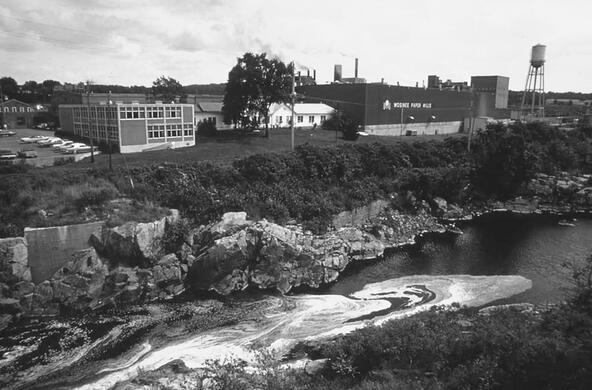As we commemorate the 400th anniversary of Henry Hudson's historic voyage up the Hudson River, it is prudent to learn what we can from the past in order to maintain and improve this irreplaceable natural resource for future generations. Last week, the New York State Department of Environmental Conservation's Hudson River Estuary Program released their first "State of the Hudson" report. It provides insight into the health of the Hudson River estuary, including the status of fish populations, the River's recovery from human-generated pollutants, and the battle against invasive species.
The report is a must-read for anyone that values the Hudson River. It is rich with historical information and it details both the challenges facing the River and steps that need to be taken to ensure that residents benefit from the many resources?recreation, fishing, water quality, wildlife habitat?that it provides.
Sections of the report are dedicated to the status of habitat, fishes, birds, water quality, tributaries, and landscapes, with clear descriptions of what has transpired and what we might expect for the future. Success stories, such as improvements in water quality and the recovery of bald eagle and peregrine falcon populations, are balanced by recognition of daunting problems such as invasive species, long-lived contaminants, and declines in commercially important fish such as American shad.
By providing a holistic snapshot of the estuary's condition, the report allows us to learn from past actions and provides a foundation for future management. Attempts to engineer our way out of bad situations offer valuable lessons. With navigation in mind, humans were heavy-handed in the modification of the River's shorelines, to the detriment of the important habitats. We must not make the same mistake in seeking solutions to current issues, such climate change and shoreline restoration. Strategies should take into account the knowledge we have accumulated about the River's ecosystem as well as consequences for future generations.
Over the past several decades long-term monitoring and collaborative research have greatly improved our understanding of the Hudson River. Long-term data have revealed vital insight into the River's biological, physical and chemical conditions. They also serve a tool for documenting improvements and revealing potential problems before they reach crisis conditions. Thanks to the Hudson River Estuary Program, the Cary Institute of Ecosystem Studies, and other partners, a network of high-frequency monitoring sites is now active in the River; real-time sensors continuously record patterns in water quality and on-the-water weather conditions. There is also a strong community of dedicated scientists focused on providing information that expedites positive outcomes while minimizing downward trends.
One of the River's major success stories is the re-engagement of Hudson Valley residents. Demand for recreational opportunities is growing rapidly and waterfront towns see great economic potential in a clean, healthy Hudson River. Concerned citizens are encouraged to contribute to the future through input to the Hudson River Estuary Action Agenda, which will debut at the 2009 River Summit, taking place tomorrow from 10 a.m. to 4:30 p.m. at the Thayer Hotel in West Point. The event will focus on revitalizing and sustaining the Hudson River for the benefit of all its residents.
We are fortunate to have management agencies with the vision and knowledge to protect and track the condition of the Hudson River using input from diverse user groups, scientists, and the ultimate stewards of New York's State's resources—the people of the Hudson Valley. The State of the Hudson report makes it clear that past actions to help the Hudson have often worked. This should give us confidence that we can make difficult and even expensive decisions in these hard times with a reasonable expectation of payback in the future.






